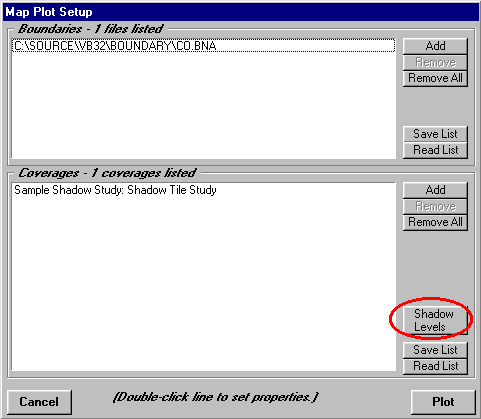
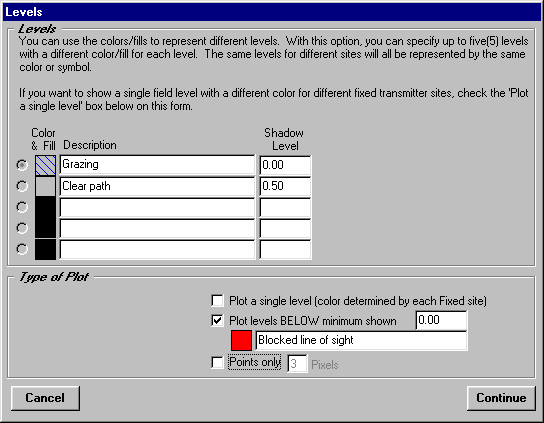
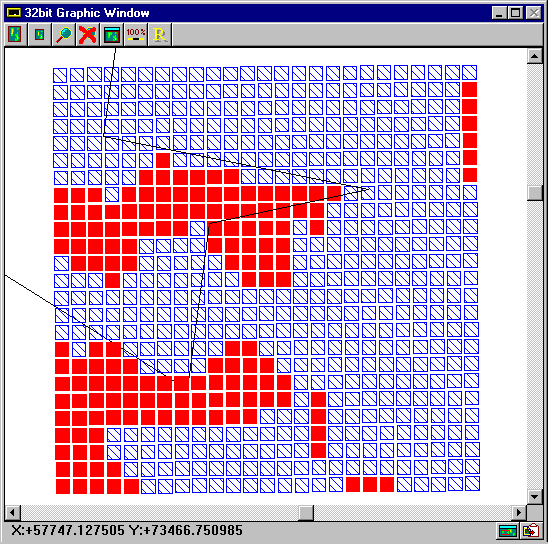
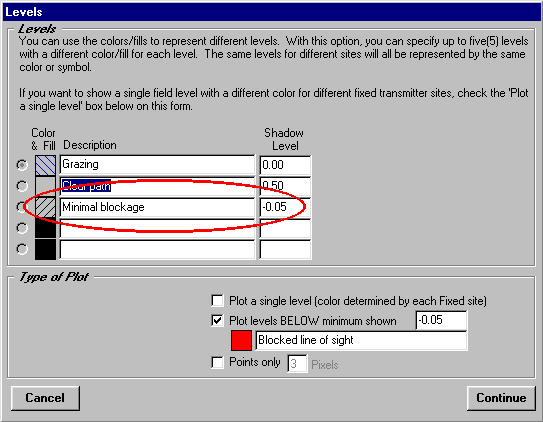
Q: When I run a shadowing study, how do I determine areas of clear line of sight, shadowing, etc.?
A: The shadow study under TAP 4 computes a "shadow ratio" for every point in the study (along radials or in a tile area). The shadow ratio is the lowest value along the path of the ratio between clearance at each point along the path and the first Fresnel zone at the specified operating frequency.
The clearance at each point is defined as the distance between the elevation of the topography at that point (adjusted for earth curvature) and the elevation of the line of sight path at the same location. A positive value indicates that the line of sight path is above the terrain at that point. A zero or negative value indicates that the terrain is higher and the line of sight is blocked. A negative clearance value will also result in a negative shadow ratio.
The shadow ratio defines the "worst case" shadowing for the path. For example, it only takes one point to block the line of sight along a path. If several points of the terrain block the line of sight, the shadow ratio for the path will be based on the point with the worst "clearance-to-Fresnel" ratio. This gives some quantitative information about blocked paths: the lower the negative value, the worse the blockage is. In the same way, positive shadow ratios indicate the relative amount of clearance on a clear line of sight path.
The values for traditional shadow studies can be based on the shadow ratios.
In the TAP plotting software you have the opportunity to set shadow levels to plot, similar to field strength threshold levels, with different colors and/or fill patterns for different levels.




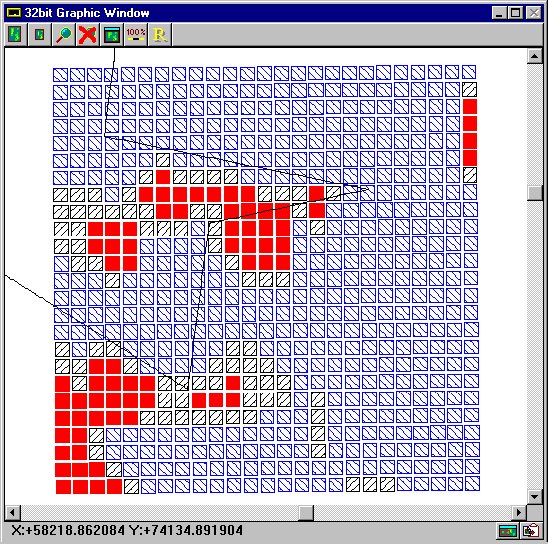
Copyright 1999 by SoftWright LLC